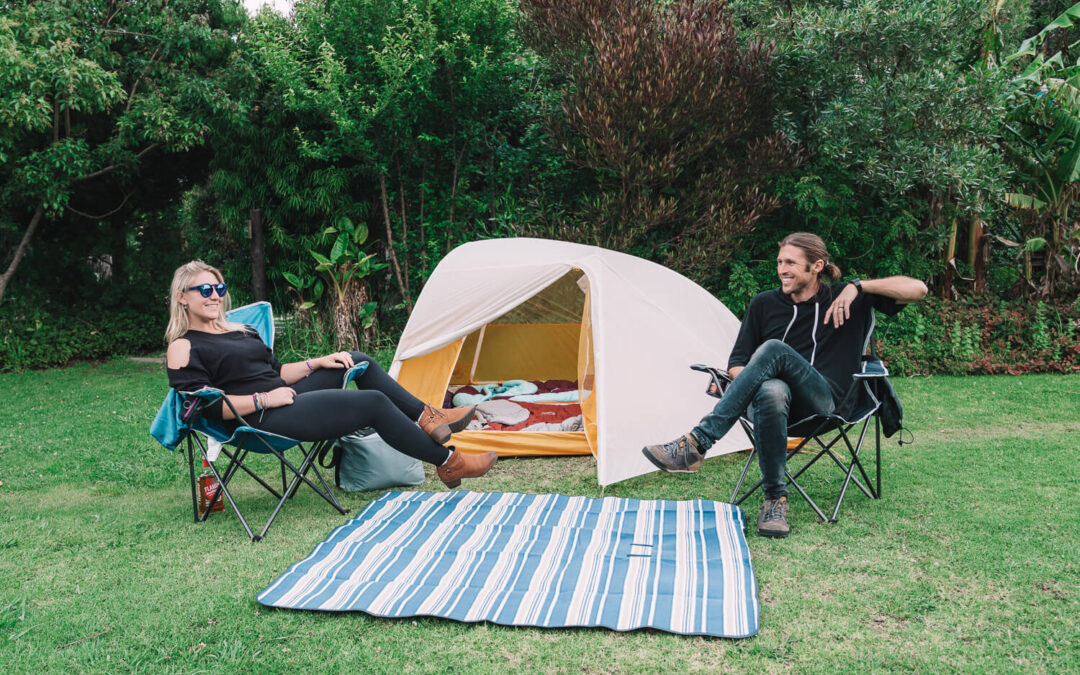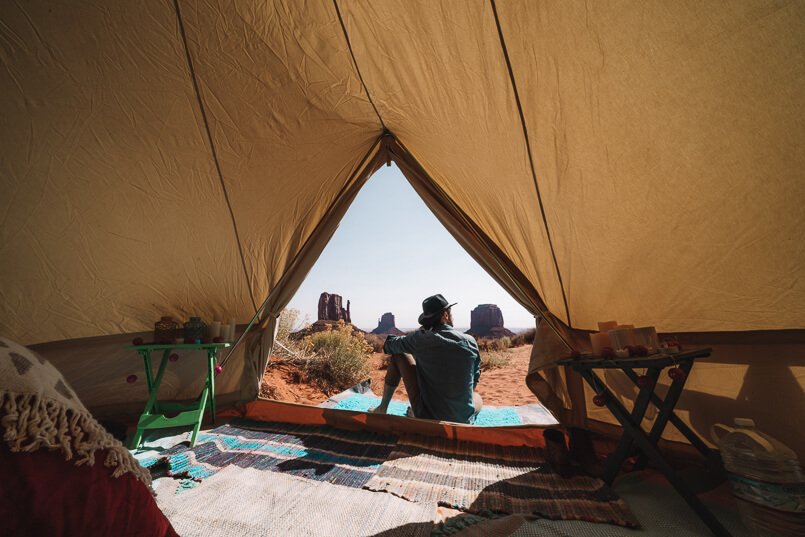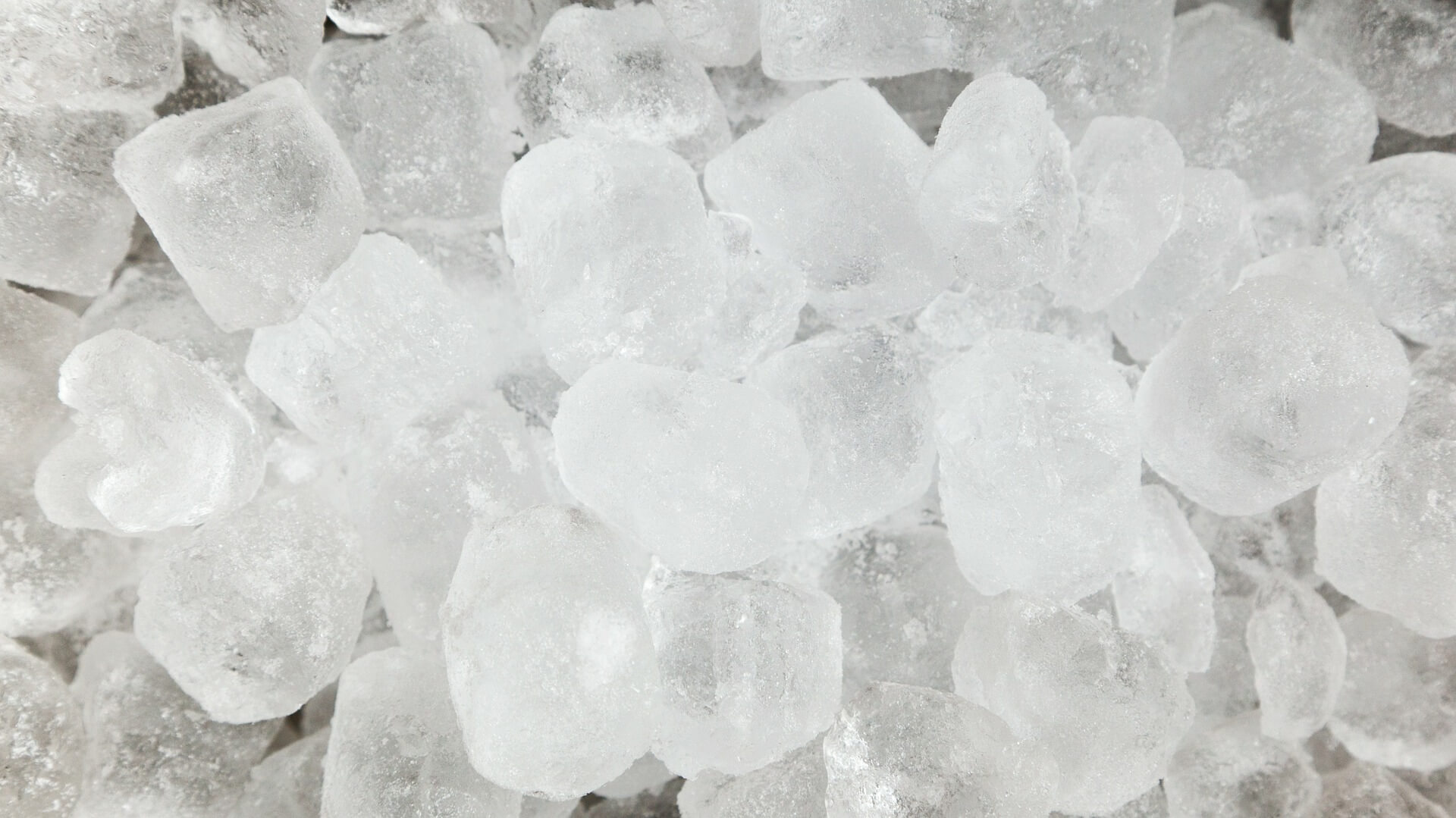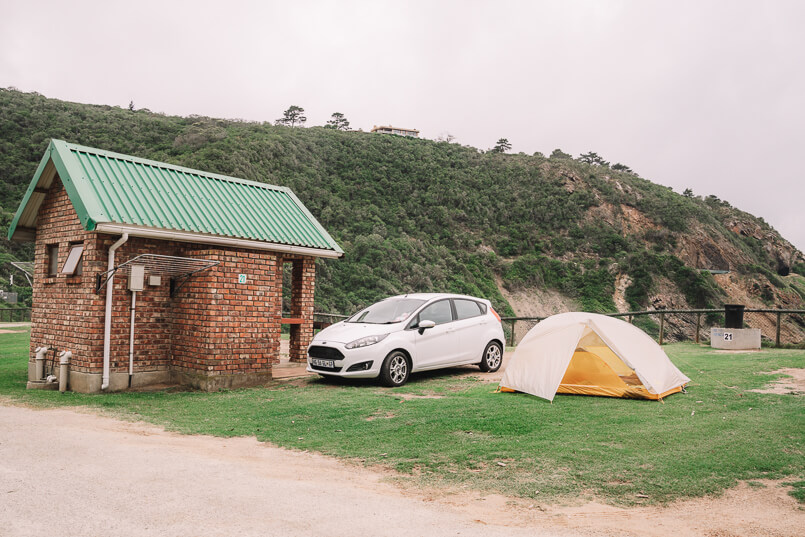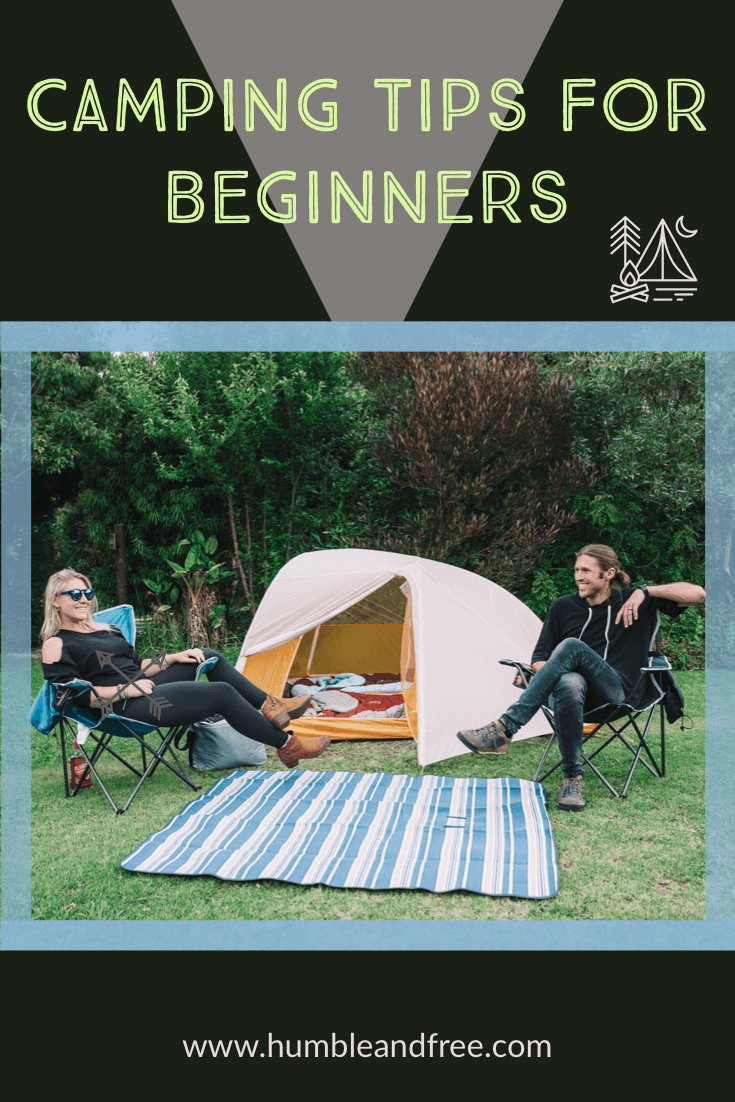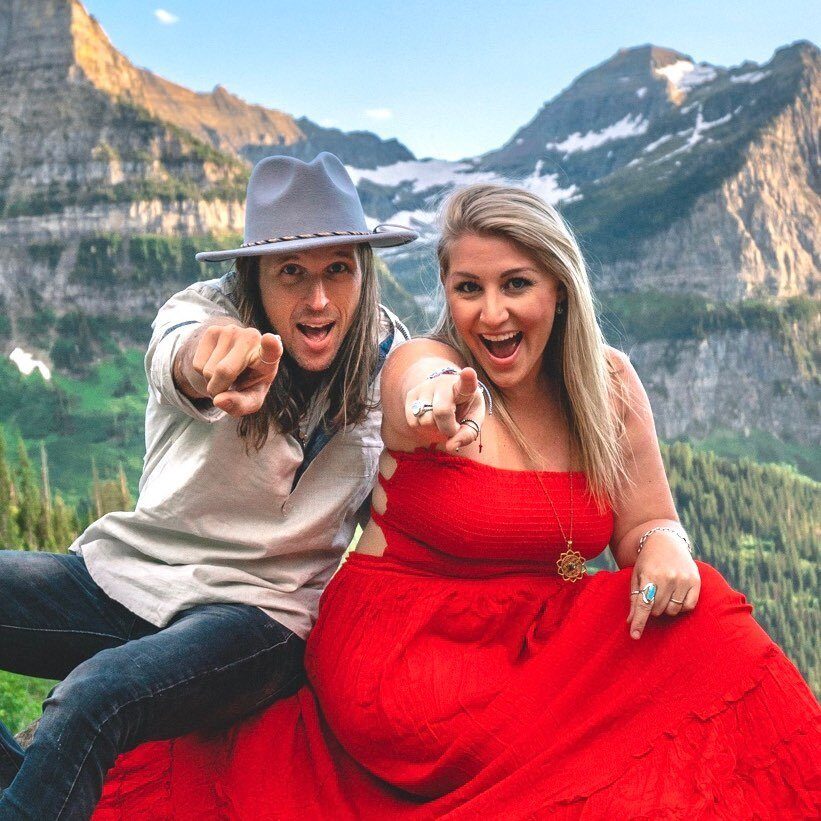In researching this Camping Tips for Beginners post, we found a dizzying amount of blogs about “camping checklists,” “essentials for camping,” and “camping guides” As a result, we wanted to provide a little different resource for newbie campers out there.
We’ve camped a ton in all our years together! Every trip taken is always a little different from the last. We’re always learning new ways to make our camping easier and more comfortable. Camp hacking if you will.
Our experience comes from camping in national parks, national forests, state parks, and BLM land. We’ve pitched our tent in desert climates, in forests among tall pines, on sandy beaches, mountains, and even sand dunes. We’ve thrived at community camping in the Black Rock Desert (Burning Man) as well as many other festivals. We’ve even driven across South Africa and Namibia, spending each night sleeping beneath the stars. Whether it’s by tent, hammock, RV, or trailer, we’ve done it!
We realize not everyone has spent as much time camping as we have, so we’re sharing some of our best camping tips for beginners. Whether you’re a total noob to camping, have gone a few times, or consider yourself a seasoned camper, these tips will help get you ready to enjoy the outdoors!
Our best camping tips for beginners!
Assess All Existing Camping Gear
Whether you’ve gone camping our not, we bet you probably have some camping gear lying around somewhere. Maybe some things you’ve bought yourself were gifted to you, or even some hand-me-down gear stashed away up on a closet shelf.
One of the most important camping tips for beginners is to take an inventory of the gear you have before starting to plan for a trip. Pull all that gear out! Dust it off and inspect it thoroughly.
What gear do you have? Tents? Sleeping bags? Tarps? Shade? Chairs? Ice Chests? Sleeping Pads? Air mattress? Etc…
If you have a tent – set it up! Check for broken poles or tears in the fabric. Ensure you have an intact rain cover and enough (straight) stakes for each anchor point on the tent.
Check anything battery-powered. Make sure everything works. Throw out old batteries and check for any corrosion. If there is any use a little white vinegar to clean it off.
Have any old air mattress, inflatable ground pads, or a cot? Test them out! Don’t assume that an old air mattress still holds air. Fill it up, add some weight, and let it sit overnight. Did it hold air? How about that cot? Set it up and take a nap on it.
Check everything you have carefully, and anything that’s broken or not working correctly eliminate it! If something has a small tear in it or a stake is bent, you can easily purchase repair kits or new stakes.
Now, build an inventory of the good usable gear you have. These are all things you don’t need to buy! For anything you did have to get rid of, that’s the beginning of your shopping list.
Planning Tips
All successful camping trips start with a good plan. My Dad would always say – “an ounce of preparation is worth a pound of regret.” This is true when it comes to camping. You’re leaving your cozy home with everything you need to rough-it and live outdoors. A good plan will help you stay safe, comfortable, and allow you to enjoy the experience.
Research your Destination
This may seem obvious, but it’s a hugely important camping tip for beginners! We’ve seen people overlook this and charge off into the wild with little more than a dot on a map. It’s painfully apparent when you see it.
Before you start packing, spend time researching where you want to go!
National Parks & State Parks
If planning to visit a National Park of State Park campground, call ahead and visit their website. For many campgrounds, visitors can reserve a campsite. These can and do fill up fast! Arriving at a campground only to find there’s no space available is a major buzzkill. When you contact the campground, also ask about amenities and any rules they have. Knowing what’s available for visitors will help later on when coming up with a packing list.
Resources:
National Forest & BLM Land
Camping in the National Forrest or on BLM land? This is an excellent choice if you’re hoping to avoid crowds, but does require more pre-planning. First, make sure camping is even permitted. These areas typically do not have defined camp spots and seldom have facilities. Also, ALWAYS check for fire restrictions!
Ideally, go scout beforehand, if that’s not feasible, then spend some time on Google Earth familiarizing yourself with the area and identifying possible camp spots. Come up with a few options, there’s always a chance someone could be there when you arrive, so you’ll need to have a couple of back-up plans.
Resources:
Private Campground
For beginner campers, privately-owned campgrounds aren’t a bad idea. These sites usually have power, fresh water, restrooms, showers, and sometimes even food prep areas. As mentioned earlier, always call ahead! See if you can make a reservation, double-check the amenities available, and ask any questions.
Resources:
HipCamp for camping on private lands.
Reserve America’s Campground Directory
CHECK THE WEATHER!!!
Again this one may seem very obvious, but it’s easy to get caught up in all the other planning and forget to check the weather. This should be a priority in your planning.
Things you should know:
- High and Low Temperatures (Average)?
- Sunny or Cloudy?
- Chance of Precipitation?
- Moon Phase (will it be bright or dark at night)?
Planning for the weather makes packing easier and ensures you’ll be prepared. Exposure is one of the greatest dangers people face in the wild. Our bodies operate around 98.6 Fahrenheit. A couple of degrees plus or minus can be detrimental. Take this seriously!
Plan your Route
Once you know where you’re headed, our next camping tip for beginners is to plan your route. Google Earth is a phenomenal tool to use. Map out your travel and familiarize yourself with the towns you’ll pass through. Identify segments of the trip with long gaps between fuel and rest stops. Additionally, ALWAYS identify the final stop before your destination.
When planning your route, pay close attention to the types of roads you’ll be traveling on. Will the journey be solely on a paved road? Will there be areas of dirt or gravel road? And, if so, what is the general condition of those roads? Will you need 4-wheel drive? Ensure your vehicle is adequately suited for the journey.
Give your car or truck a good once over in preparation for your trip. Make sure the tires are in good condition, including the spare. Make sure you bring a jack and know how to change a tire if necessary. Check your battery life and pack jumper cables. Check the engine oil and coolant levels. Do all you can to ensure your vehicle is safe and ready.
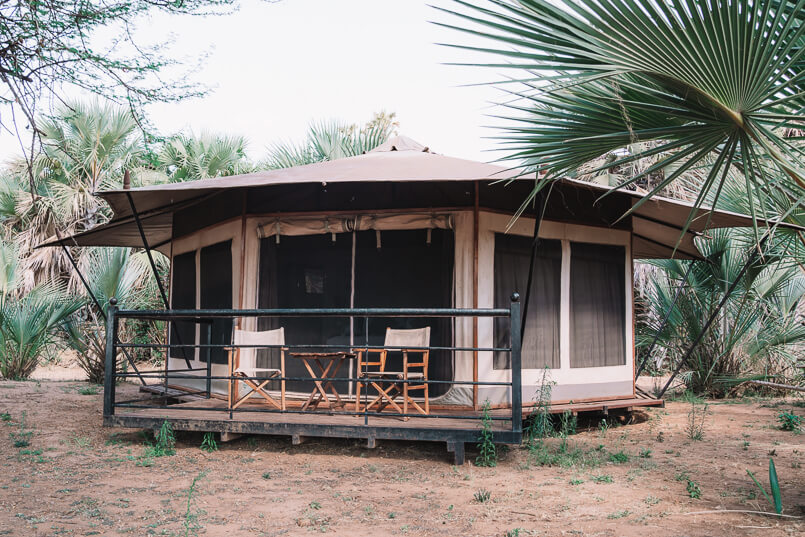
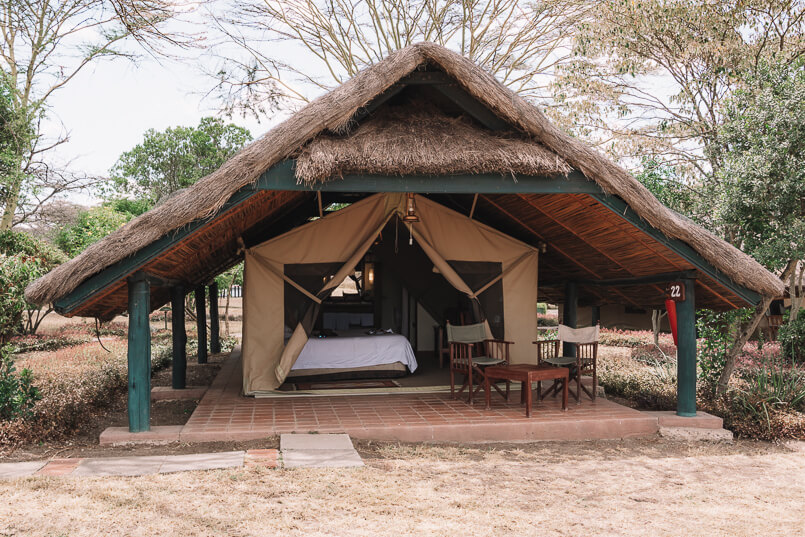
Create a Packing List
Once you know where you’re headed, the weather you may encounter, and the route to get there, it’s time to create a packing list!
We know there’s an abundance of camping checklists out there, and we didn’t want to create another. We believe the best list is one you create based on your needs for the trip.
If this is your first time and need some ideas to get started, REI’s Camping Checklist is our favorite generic list for just about any trip.
Outdoors Dress Rehearsal
As a beginner camper, a great tip is to do a test-run at home. With all your existing gear and the new gear, you’ve acquired take some time to set it all up. Figure out how everything works.
If you buy a new tent, definitely practice setting it up before you go! Most of the time you’ll arrive at your camp spot at dusk or after dark. Setting it up for the first time under those conditions can be frustrating.
It’s not enough to just imagine using the camping gear. Before leaving home is your only chance to make sure you have the right stuff and ensure you know how to use it. This is an opportunity to identify things that could break on the trip and pack the items needed for repairing anything that does break.
Plan your Meals
Every camping trip we’ve taken always includes a meal plan for each day. This isn’t something we religiously stick to, but having a plan makes it much easier once away from home.
We recommend making a calendar for the trip. Start with the day you leave and end with the day you get back home. Write “breakfast,” “lunch,” “dinner,” “desert,” and “snacks” under each day.
Do some brainstorming and come up with foods you’d typically eat at home and some things that would be fun and tasty to have while camping. Check out our Pinterest Board of Camping Recipes for inspiration.
Having a meal plan sorted out makes your grocery list very easy to put together. You’ll also save money at the grocery store by buying only what you need.
With grocery shopping done, prep your meals ahead of time. Pre-make sandwiches, salads, dips, sides whatever you’re planning to eat. Store in Ziploc bags and airtight plastic containers. We strongly recommend double bagging everything going in a cooler! The more you can prep at home, the better. Prepping meals will reduce trash at camp, minimize messy clean-ups, and give you more time to enjoy the outdoors.
Refer to your meal plan when putting together your packing list. Make sure you include the supplies needed to prepare, cook, serve, and eat your meals. Camp Stove? Charcoal? Propane? Pots? Pans? Tongs? Knives? Cutting board? Etc..
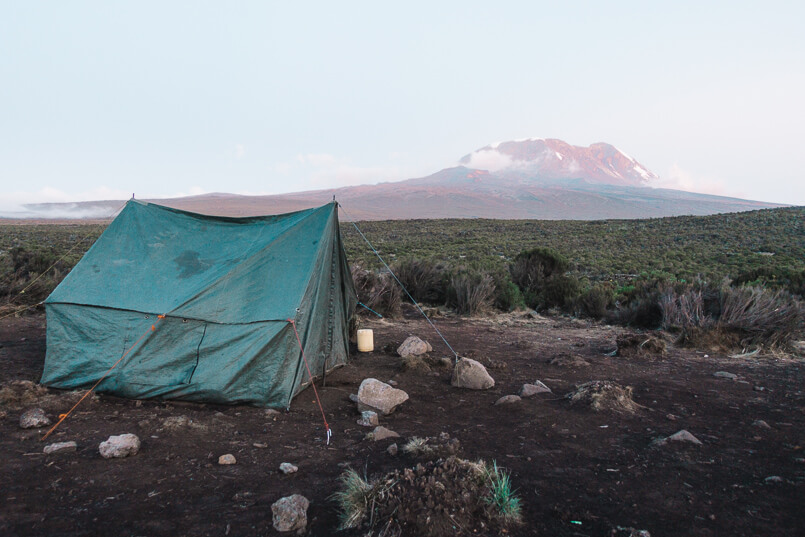
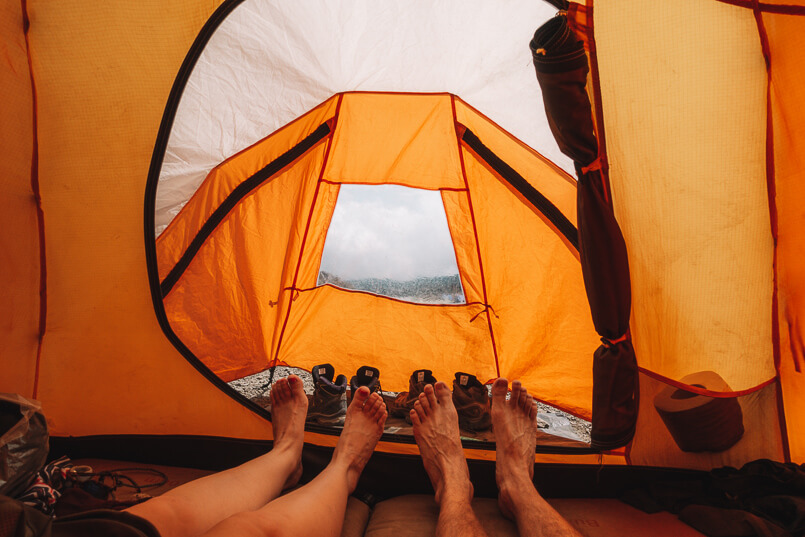
Packing your Cooler
You may be thinking packing a cooler is a strange thing for us to include in our camping tips for beginners, but it’s something we’ve learned over time.
Ideally, bring two coolers; one for beverages and one for food. Having two makes everything more organized and will save ice longer in the food cooler, which is opened less frequently than the drinks.
Before filling your coolers, bring them inside and allow them to sit open, overnight, in the coldest part of your home. The reason is to reduce their temperature.
When packing your food, do so in the reverse order you plan to eat. For example, the last meal you plan to eat should be on the bottom and the first on top.
When prepping meals, only use square or rectangular containers for storage. This helps maximize your space when loading it in the cooler.
Lastly and probably most importantly… any food at risk of getting wet when the ice inevitably melts should be sealed in Ziploc bags. Yes, even those plastic storage containers do leak. Quart and gallon size bags work great. We always double bag things! This not only keeps water out of your food but prevents liquids from seeping out and leaving your cooler water gross and murky.
Ice Making and Hoarding
This one is an excellent MONEY SAVING camping tip for beginners.
If you have an ice maker in your freezer, then you’ve got ice for your cooler! Beginning a few days before your trip fill gallon size Ziploc bags from your ice maker, a couple each day. Store them in your freezer, and by the time you’re ready to leave, you’ll have plenty of ice.
To get even more ice out of your freezer, fill any plastic containers, cups, or whatever you have with water and leave them to ice up overnight. Like improvised ice trays. These larger blocks of ice usually melt slower too! This is something we did for our last trip to Burning Man, and it was a game-changer for us.
Dishes and Utensils
We know it’s tempting to buy cheap throwaway paper plates and plastic utensils, but investing in reusable is much better and will significantly reduce trash generated in camp.
With reusable dishes, there will be some additional clean up, right? Well… we have a solution for that! Before eating, we line our plates and bowls with Glad Press n’ Seal Food Wrap. This product has a sticky back on one side that sticks to our dishes and is textured on the other.
Clean up is as simple as pulling off the Press n’ Seal, crumbling it into a tiny ball, and tossing it in the trash.
For cleaning, reusable utensils bring a spray bottle of Lysol Multi-Surface (or similar). Spray down the utensils and wipe them clean with a paper towel. We do this with our cutting boards and any other dishes used in preparing and serving food.
Don’t waste time washing dishes in camp!
Let there be Light!
When camping, once the sun goes down, you’re in the dark! We have two camping tips for beginners when it comes to light in camp.
For personal use, bring a headlamp. Having one frees up your hands without having to hold a flashlight in your mouth. Who knows where that handles’ been anyway!
Lighting around camp is essential. The old school gas lanterns are great for a lot of light, but we think they are too intense and don’t create a nice ambiance in camp. We recommend bringing along a few strands of battery-powered LED lights. Also, we use a couple of collapsible rechargeable lanterns.
Personal Hygiene
When living outdoors, you can’t avoid getting a little dirty, but you don’t have to stay dirty.
While some campgrounds have showers for guests to use, not all campsites do. A great tip we picked up is to bring along some wet wipes, the kind safe for use on skin, not the household cleaning kind! At the end of the day, before snuggling up beneath the stars, strip down and clean yourself off with a few wipes. You’ll be left feeling (and smelling) nice and refreshed.
Let Someone Know where you’re going!
Before leaving home, share your plan with someone who isn’t going to be on your trip. Give them all the details someone would need to find you in the event something happens.
Details you should include:
- Where you’re going (campground, coordinates, map pin, etc.)
- The route you’re taking
- The vehicle you’ll be driving (license plate and description)
- Members of your party
- Any dates you can provide (departure, arrival, return, etc.)
Once Packed… Double Check your LIST!
Before finally hitting the road, take a moment and double-check you have everything.
Either revisit your checklist or run through a visualization of your camp trip. See yourself driving there, arriving, setting up camp, cooking, sleeping, any activities you have planned, etc… As you visualize the trip, notice all the essential items you need, and verify that they are in the car. This is how we do it.
No one’s perfect, though, and inevitably over time, you’ll forget something. On one trip, we forgot our air mattress! (GASP!) Fortunately, one of our friends had an extra. We’ll never forget it again!
The Most Important Camping Tip for Beginners
Above all, the most essential tip for any beginner camper is to maintain a positive and fun mindset. Accept things may not go according to plan. If things go wrong… Don’t Stress! Don’t Panic! If you’re the leader of the trip, this is most important for you. Setting the tone for the journey is squarely on your shoulders.
Wishing you many new memories in the outdoors!
If you have any questions, please leave them in the comments below.

